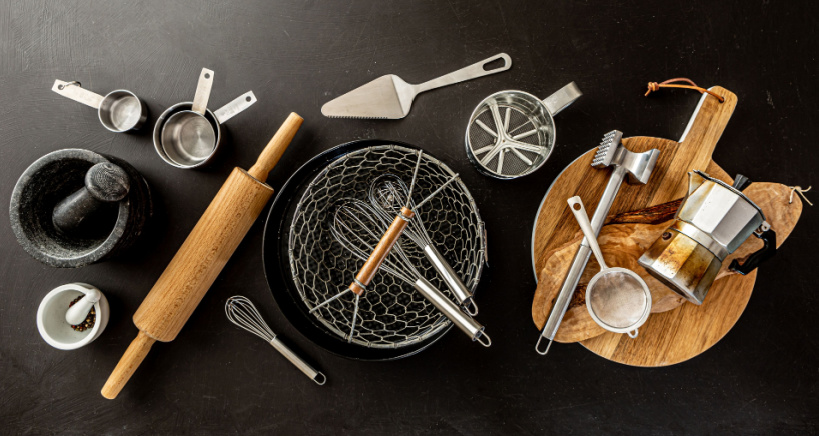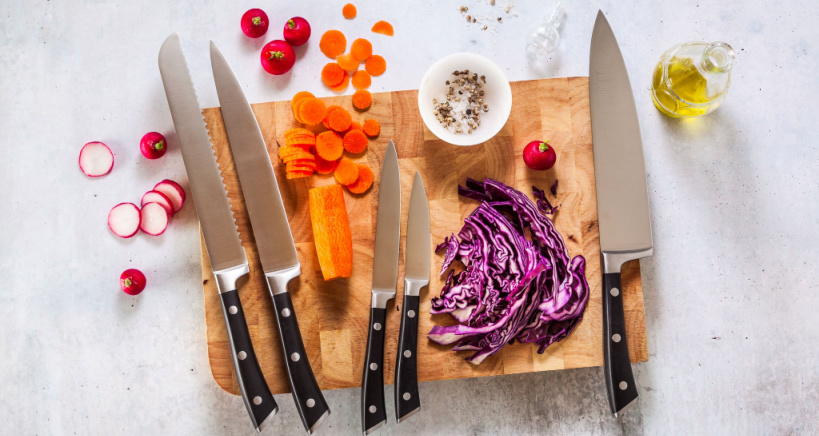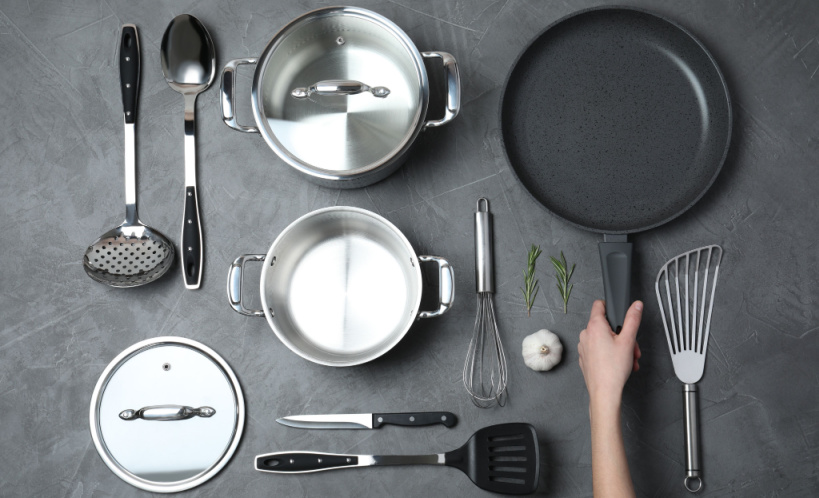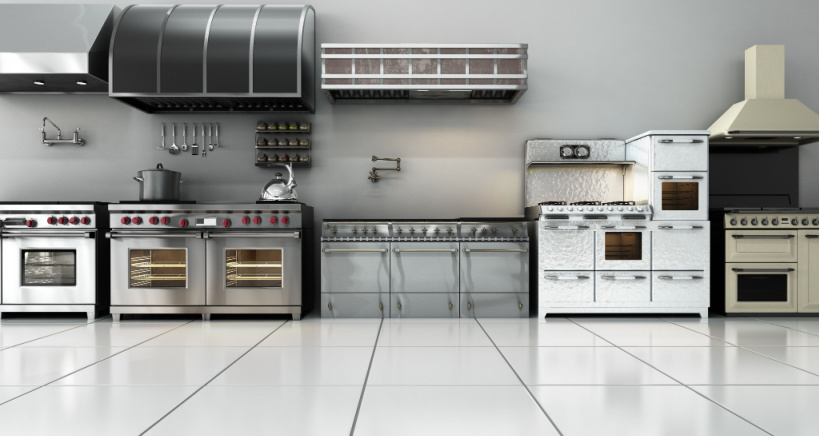 What are the common elements found in a dinner party with friends, Thanksgiving dinner, and Sunday brunch with the family?
What are the common elements found in a dinner party with friends, Thanksgiving dinner, and Sunday brunch with the family?
Bonding and camaraderie feature in all of the above situations, as does food. Long before people coined the phrase breaking bread, food was synonymous with companionship. Turns out that humans are not only social creatures, they are also social eaters.
The COVID-19 pandemic ushered in the next level of the food-friendship paradigm. Families under lockdown found themselves with more time on their hands – plenty of extra time to explore a new hobby. And, many fell in love with cooking with their kids, spouses, partners, friends, or even on their own. In fact, a survey by Premier Foods, showed that 73% of British people enjoyed the opportunity to invest time in home cooking and 91% hope to continue to hone their home cooking skills.
Benefits of Home Cooking
Home cooking isn’t just a fun means to bond with family and friends. It’s also good for the gut and good for the soul. Home cooking is associated with healthier eating patterns and a plethora of mental health benefits, from learning new skills and tasks, to reducing caloric intake and being more mindful when eating.
While professional chefs have been schooled to know what they need for optimal performance in their commercial kitchens, the home chef may not know where to begin. To help you out, we came up with essentials that you should have in your kitchen to take your home cooking to the next level:
Quality Knives
Just like stethoscopes are synonymous with doctors, knives represent chefs. There are dozens of kitchen knife varieties on the market. However, a home chef can usually get by with the following three types:
- Chef’s knife: The versatile chef’s knife has a broad tapered edge, is between 6 – 12 inches long, and has a sharp edge. Due to its slightly curved edge, users can effortlessly rock the blade from the top to the end of the blade in one motion, or up and down, depending on what is being cut.
- Paring knife: A paring knife is similar to a chef’s knife, except much shorter, between 3 – 4 inches long. Sometimes a shorter blade comes in handy, especially when more intricate cutting is needed. Look for a durable paring knife with a honed and polished edge.
- Serrated knife: Bread knives, steak knives, and tomato knives all have one thing in common, instead of a smooth edge, these knives have jagged, serrated edges. Serrated knives are particularly helpful for substances with more than one texture, such as tomatoes, with their leathery skin and gooey middles. For home cooking minimalists, a serrated utility knife is handy for most situations.

A well-stocked kitchen is one that’s equipped not just with a collection of blades, but also the means to keep these knives sharp. This means including the following in your home kitchen:
- A cutting board: A heavy duty wood cutting board is an essential partner to the trusty chef’s knife. Not only will it protect the knife’s edge from dulling, but durable wooden boards are long-lasting. However, some home chefs prefer to use plastic cutting boards because they are easier to store, clean, and sanitize.
- A knife sharpener: Professional cooks’ speedy, effortless chopping is the result of a partnership between the chef’s skill and the knife’s honed edge. Regular maintenance improves chopping ability and makes knives last longer, giving home chefs that Iron Chef experience during dinner prep.
For the average home chef, an electric sharpener, although noisy, is a choice that doesn’t require much skill or experience. However, make sure to keep a sharpening steel handy to freshen up knives in between electric sharpening.
A knife storage system: Leaving knives knocking about in a drawer isn’t safe, or beneficial for your knives. Some home chef’s like to hang their knives up using a mounted magnetic knife holder. Others prefer an in-drawer knife block. If choosing the third option, a countertop knife block, make sure to select one that is hygienic and doesn’t allow the bottom of the block to accumulate germs and dirt.
Pots and Pans
Like the emblematic knife, pots and pans are ubiquitous in the cooking world. The sheer variety of pots and pans on the market can be overwhelming. Here are some of the most useful ones to have in your cabinets:
- Cast iron skillet: These pans are hardy, resourceful, and seriously long-lasting. Antique Roadshow once ran an episode on cast iron cookware where they highlighted pans still performing after a century on the job!
- Non-stick frying pan: Whereas the cast iron skillet is a good choice for high-heat cooking situations, such as searing a steak, the lightweight and easy-to-clean non-stick fry pan is the go-to pan for everyday low-heat home cooking. Eggs, pancakes, and crepes are a few of the recipes suited to a non-stick pan.
- Dutch oven: CNN calls the Dutch oven “the ultimate kitchen multitasker”. The Dutch oven converts effortlessly from the campfire, to the oven, to the stovetop and can be used to make meat, rice, stew, casserole, and even bread.
- Stainless steel saucepan: Home chef’s should have a basic pot for making sauces, and small soups. Stainless steel is hardy, and can seamlessly transition from the stove to the oven.
- Stock pot: A stock pot is essential for making soups and soup stocks. These versatile pots also have a number of other cooking applications.
- Cake pan: There are many varieties of cake pans on the market. Home chefs can select the appropriate one based on how much, and what type, of baking they do. A springform pan helps get the finished cake out of the pan intact. Muffin tins and Bundt cake pans can produce distinctively shaped desserts. Regarding preferred materials, aluminum tends to outperform silicone and nonstick cake pans in its heat-conduction abilities.
- Baking sheet: This flat aluminum baking sheet with a low rim, can take care of many other baked items, from roasted vegetables to cookies.
Food Measurement Tools
For many dishes it doesn’t really matter exactly how much a “pinch” of salt is. However there are numerous recipes, especially in baking, where precision is key. So, in addition to measuring spoons, you will need measuring cups for both dry and wet ingredients. It is also beneficial to keep a kitchen scale on your countertop. A kitchen scale can help with a dish’s proportionality and taste; and is also a healthy eating must-have for portion control.
Cooking Utensils
It seems like every day a new “must have” cooking utensil hits the shelves at Bed, Bath, & Beyond. While it’s certainly true that many of these utensils, like cheese slicers and melon ballers, are quite situation specific, there are some utensils that are universally utilitarian.
It behooves the average home chef to keep their kitchen stocked with these utensils:
- A vegetable peeler
- A wooden mixing spoon
- A meat tenderizer
- A slotted spoon
- A pair of kitchen tongs
- A ladle
- A non-stick spatula
- A pair of kitchen scissors
- A can opener
- A box grater
Kitchen Appliances
Kitchen appliances don’t just save time when home cooking, and make food prep easier, there are some recipes that require the right equipment in order to make them. With so many appliances on the market, which ones should home chefs invest in?
- A slow cooker: Dinner on demand? Not only is a slow-cooker convenient, and serves up piping-hot meals at the end of the day, some slow-cookers can also produce food that is better tasting. The slow cooker makes less expensive cuts of meat more tender because the mild heat of a slow cooker breaks apart the connective tissue and fat, without burning the meat.
- A blender: Blenders are ideal for combining liquid ingredients in sauces, smoothies, and soups. With a curved bottom and a spout at the top, these appliances are optimized for making liquid recipes fast. Home chefs who want to save on cabinet space can opt for a hand blender.
- A food processor: As opposed to a blender, a food processor is ideal for thick or solid mixtures. Food processors can dice vegetables, puree dips, and even grate cheese.
Food Storage Containers
Proper food storage containers can save the home chef time and money. While it may seem obvious that meat, fish and other cooked foods left out of the fridge will go rancid after a few hours, home chefs also need to keep an eye on their dry goods. Ironically, the paper sack that flour comes in when bought at the grocery store hastens flours’ expiration date.
By contrast, using storage containers, and storing them properly, can significantly prolong the shelf life of flour, sugar, coffee and other dry, and wet ingredients. Additionally, home chefs will likely have delicious leftovers that they will need to store in good quality containers. Labeling items with dates and storing dry ingredients in dry cool places and wet ingredients in the refrigerator or freezer will prolong their shelf life.
Kitchen and Food Safety Tools
Home cooked food can be mouth-wateringly delicious. But safety comes before taste. For a safer kitchen experience, home chefs should have a pair of durable and protective oven mitts for personal safety, as well as food thermometers for food safety. A food thermometer lets home chefs know when the food is cooked to a safe internal temperature. The United States government has guidelines on what the safe internal temperature is for a variety of foods.
In addition to these seven essentials, home chefs will need to keep their kitchens well-stocked with some non-purchasable and non-perishable cooking must-haves – the ones that take up no cabinet space – such as a sense of adventure, readiness to get messy, flexibility, and a good appetite.

